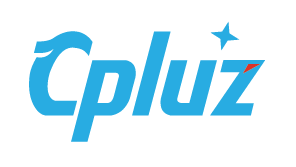As your website grows, it’s essential to ensure that the infrastructure supporting it can keep up with the increasing traffic and data requirements. One critical aspect of maintaining a high-performing website is selecting the right hosting plan. In this article, we will discuss the signs that indicate it’s time to upgrade your hosting plan and the steps you should take to make a seamless transition.
1. Monitoring Website Traffic
One of the most apparent indicators that it’s time to consider upgrading your hosting plan is a significant increase in website traffic. You can use tools like Google Analytics or other web analytics software to monitor your site’s visitor numbers, page views, and bounce rates. If you notice a consistent upward trend in these metrics, it may be a sign that your current hosting plan is no longer sufficient to support your growing online presence.
2. Slow Website Performance
Another red flag that could signal the need for a hosting upgrade is slow website performance. If your pages take too long to load or if you experience frequent downtime or outages, it might be due to insufficient resources provided by your current hosting plan. Inspecting your website’s response time and server uptime using tools like GTmetrix or Pingdom can help you assess whether upgrading your hosting is a viable solution.
3. Resource-Intensive Applications or Scripts
If your website relies on resource-intensive applications or scripts, such as databases or content management systems (CMS), it might be time to consider upgrading to a more powerful hosting plan. These tools can consume significant system resources and impact the overall performance of your site. Be sure to analyze your website’s current resource usage and consult with your hosting provider to determine if an upgrade is necessary.
4. Security Concerns
Security should always be a top priority when managing a website. As your site grows, so do the potential risks it faces. If you find yourself increasingly concerned about website security or have experienced security breaches in the past, upgrading to a more robust hosting plan with additional security features might be the best course of action.
5. Scalability and Flexibility
As your business expands or your online offerings change, so may your hosting needs. If you anticipate future growth or need greater flexibility in terms of the applications or features your website can support, upgrading to a more versatile hosting plan might be the wise choice.
Steps to Upgrade Your Hosting Plan
1. Research: Begin by researching various hosting options and comparing their features, pricing, and customer reviews. Consult with your current hosting provider as they may offer upgraded plans or recommend alternative solutions.
2. Backup Data: Ensure that you have a complete backup of your website data, including files, databases, and configurations. This step is crucial to minimize the risk of losing any information during the upgrade process.
3. Choose Your New Plan: Select the hosting plan that best suits your needs and budget. Be sure to consider factors such as available resources, scalability, security features, and customer support.
4. Communicate with Your Hosting Provider: Contact your hosting provider and discuss the upgrade process, including any necessary preparations or steps they will take on their end.
5. Prepare Your Website: Update your website’s configurations, software, and themes to ensure compatibility with your new hosting plan. This may include upgrading certain plugins, scripts, or applications.
6. Perform a Test Upgrade: Before making the final transition, perform a test upgrade on a staging environment to ensure everything runs smoothly and that no issues arise.
7. Execute the Upgrade: Once you’ve completed the necessary preparations and feel confident in your readiness, execute the upgrade to your new hosting plan. Keep in close communication with your hosting provider throughout the process to minimize any potential downtime or complications.
8. Monitor Your Website: After the upgrade is complete, monitor your website closely for any performance issues or compatibility concerns. Be sure to test all functionality and features to ensure they are working correctly.
9. Address Any Post-Upgrade Issues: If you encounter any problems during the post-upgrade phase, work with your hosting provider to address them promptly. This may include troubleshooting compatibility issues or adjusting server settings.
In conclusion, upgrading your hosting plan as your website grows is an essential step in ensuring a high-performing and secure online presence. Keeping a close eye on key performance indicators such as website traffic, response time, and security risks will help you determine when it’s time to make the switch. By following the steps outlined above, you can upgrade your hosting plan smoothly and with minimal downtime or complications.

